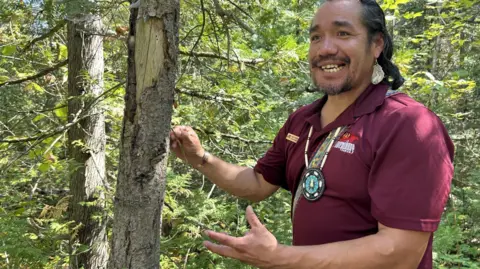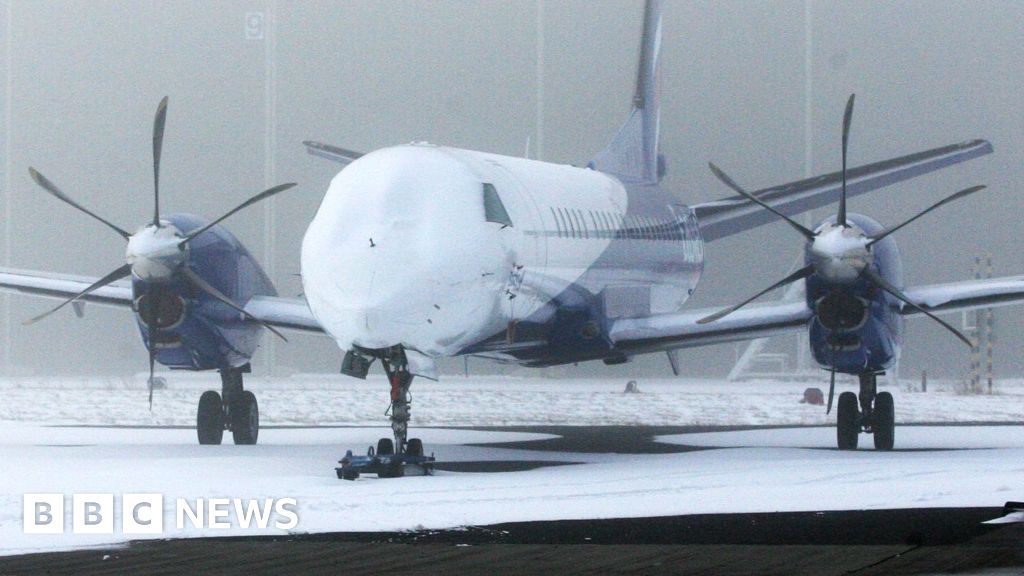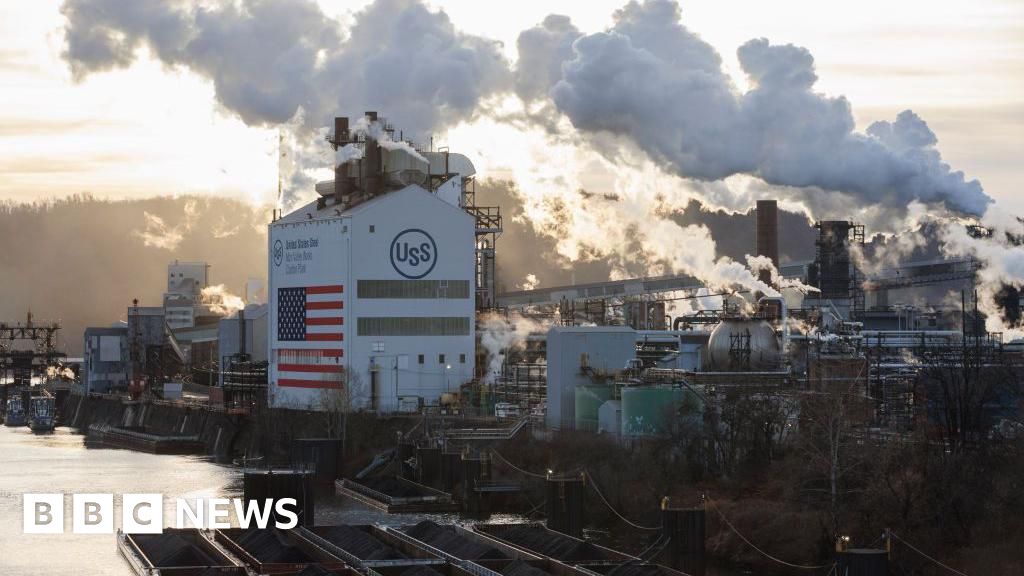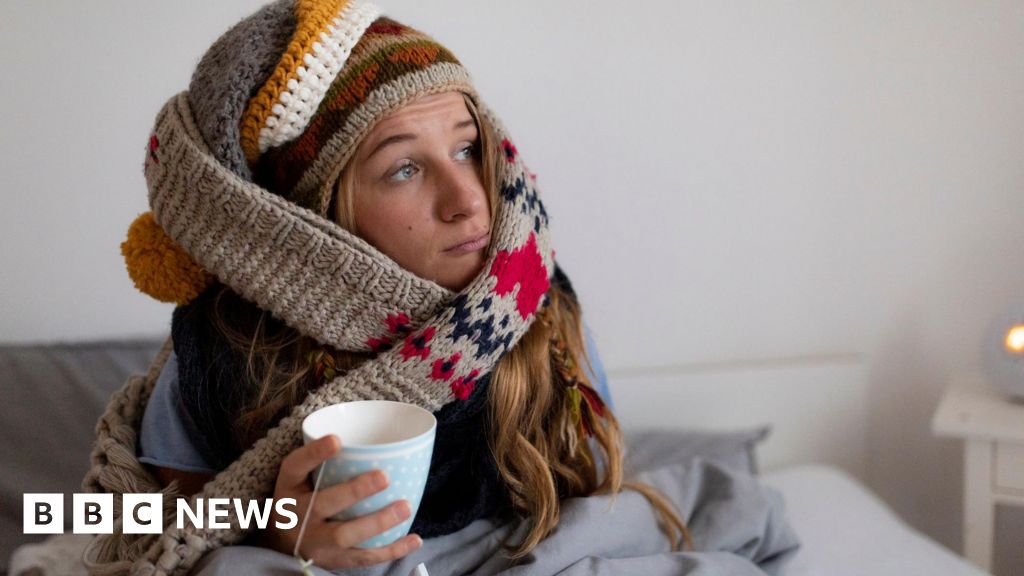
 BBC
BBC
Jack Rivers admits that being a full-time tour guide would not be everyone
Canada has launched a new drive to get more overseas tourists to visit the country. Yet staffing shortages, wildfires and a spat with China will not make the task easy.
“You can learn about nature, indigenous culture and our history,” says tour guide Jack Rivers.
These are three reasons why he thinks more people should take a chance on holidaying in Canada.
Mr Rivers, who is indigenous, leads organised walks around Wiikwemkoong Unceded Territory on Manitoulin Island, in Ontario.
It’s an unspoiled area, where dense forests line the shore of Lake Huron.
The walking tours are part of Wiikwemkoong Tourism, an indigenous tourism organisation that teaches visitors about native history and the land.
Mr Rivers says his job is “great”, but he admits that it is not for everyone. “It’s not an 8-4 job,” he says, adding that “it relies on people working weekends and being away from their family”.
Aa a result, Wikwemikong Tourism has struggled to retain staff, a problem that’s reflected across a Canada-wide tourism sector still said to be short of hundreds of thousands of workers.
These staffing shortfalls will have to be addressed if the Canadian government is successful in its new drive to increase visitor numbers to the country.
The push, led by government body Destination Canada, comes as visitor numbers to Canada have failed to recover post-Covid to their 2019 peak of 22 million people. Last year the total was 18.3 million, 17% lower.
The new strategy called A World Of Opportunity, aims to increase revenue from Canada’s tourism sector to $CA160bn ($116bn; £89bn) by 2030, up from $CA109bn last year.
It also wants to see Canada become the world’s seventh most-visited country, up from the current 13th place.

 Getty Images
Getty Images
Canada is not short of dramatic scenery
More than 3,000km (1864 miles) west of Manitoulin Island, sits the popular tourist town of Jasper in Alberta’s Rocky Mountains.
Back in July, a wildfire dubbed “the biggest in the region for a century” destroyed a third of the town’s buildings.
One of those hit was Maligne Lodge, a hotel that has been welcoming guests since the 1960s. Owner Karyn Deco says the fire was “devastating”.
“There is a lot to do, but I try and focus on what I have to do today, and leave tomorrow to tomorrow,” she says.
Thankfully for Ms Deco, Maligne Lodge was insured, and she hopes to rebuild it before next summer. But how long will it take for all the other hotels in the town to reopen?
“Jasper is an international tourist destination, and the hotels here are booked 100% between 1 June and the middle of October,” she explains. “We're already sold out for next summer. The challenge is that not as many people will be able to visit Jasper until all the hotels are rebuilt, and we don’t know how long that will take."

 Karyn Deco
Karyn Deco
Karyn Deco worries about how long it will take the town of Jasper to fully recover
Another big issue for the Canadian tourism sector is a fall in the number of Chinese visitors.
Relations between the two countries have been fraught since a diplomatic row back in 2018.
That year the chief financial officer of Chinese telecoms firm Huawei was arrested in Canada in response to a US warrant. China responded by detaining two Canadian citizens living in China on spying charges.
The three men were not released until 2021.
Some analysts say this row is a main reason why, following the Covid pandemic, China still hasn’t put Canada back on its list of approved countries for Chinese citizens to visit.
James Griffiths, Asia correspondent for Canadian newspaper Globe & Mail, says that “the freeze in bilateral relations [between China and Canada] still hasn’t really recovered”.
He also points to the impact of Russia’s invasion of Ukraine, which means that Western airlines can no longer fly through Russian airspace.
“A lot of North American and European carriers have really struggled with routes to China because they can't fly through Russia or over Russia, and by avoiding Russia, you add about three hours to the flight time, which is more expensive for the airlines and onerous for passengers.”

 Getty Images
Getty Images
Fewer Chinese tourists are visiting Canada to see sights such as Niagara Falls
Canada’s Minister of Tourism Soraya Martinez Ferrada is the politician in charge of bringing more tourists to the country. She tells the BBC that she also wants them “to stay longer” and “spend more money”.
When asked about the drop in Chinese visitors, she says Canada is focused on its largest markets, Europe and the US. Though “with Chinese visitors, we see that Canada is still of interest to them,” she adds.
Tackling climate change is another of the government’s priorities, which Ms Martinez Ferrada accepts is an “existential threat to Canadian tourism".
Yet Canada, she says, is a big country, and “it's not the whole country that's on fire”. “We have to make sure travellers understand that there might be threats around climate change, but there are so many other places to discover that aren't impacted.”
As for staffing shortages hampering firms like Wiikwemkoong Tourism, she admits: “I do think that we need to do a better job of promoting the sector and the career opportunities that we have.
“Having the skills and having the training to do that, I think it's important.”

 Movie
Movie 2 months ago
69
2 months ago
69 





![Presidents Day Weekend Car Sales [2021 Edition] Presidents Day Weekend Car Sales [2021 Edition]](https://www.findthebestcarprice.com/wp-content/uploads/Presidents-Day-Weekend-car-sales.jpg)



 English (United States)
English (United States)